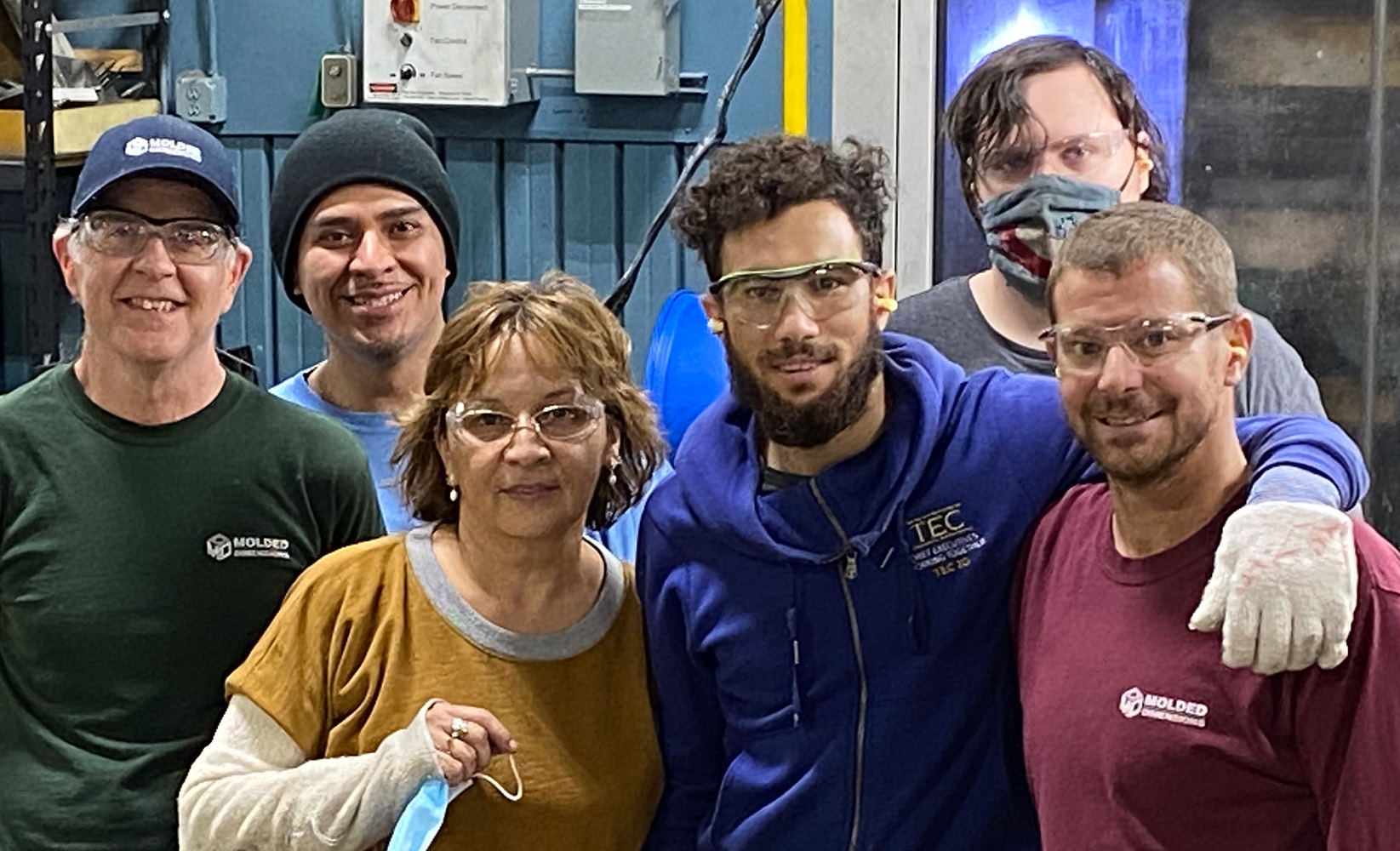Originally appeared in Inside Rubber Magazine, January 2019
Molded Dimensions LLC has been in business since 1954. The company moved to Port Washington, Wisconsin, in 1973, where it has grown into a 100+-employee, three- shift facility with four separate divisions: rubber, cast urethane, moldmaking and strategic sourcing. President Mike and CEO Linda Katz purchased the business in 2001, and its project base focuses on low- to medium-volume custom manufacturing. This niche serves Molded Dimensions well, keeping its customer portfolio diversified and ensuring a continuous stream of interesting technical projects.
With a relatively small employment pool (Port Washington has a population of around 12,000) and three shifts to staff, maintaining a reliable employee base could be a concern. Mike and Linda Katz, however, have focused on making Molded Dimensions a place “where great people choose to work.” In fact, a visit to the company’s website finds the employee, rather than the customer, at the top of the mission and strategy page.
Where great people choose to work
“Our goal is to make Molded Dimensions a place where great people choose to work,” said Mike Katz. “When you do that, it shouldn’t matter whether employment rates are high or low because your company is where people want to be.”
Establishing this reputation requires a commitment to the employee from the very first day. Once a new employee steps through the door at Molded Dimensions, the training program begins. “We have a clear process that lays out when new employees start getting feedback on how the work is going.”
New employees receive scheduled follow-ups within the first week, and then structured follow-ups occur at the 30- and 90- day marks. These include a meeting with the company’s chief operating committee. “Everyone wants to feel like they are adding value to the company, the customer and each other,” said Katz, “so these are very deliberate conversations where we talk about how everyone’s role contributes.”
At Molded Dimensions, newer employees also are asked for their feedback on supervisors. “Sometimes, we take someone who is good at their job and move them into a supervisor position, but we don’t train them on what that actually means,” said Katz. “Our new employees tell us the good and the not-so-good about training process, and it allows us to help our supervisors get better, too.”
Expectations are high
“We measure turnover in two different ways,” said Katz. “For employees with more than one year of service, turnover is 6%. For employees with less than one year of service, turnover is 15%.”
He continued, “One of the reasons our turnover rate under one year is so high is because we cause that. We expect great things from our employees. If you come here and you don’t want to be great, then we might not be the place for you.”
Mike and Linda Katz each had careers in manufacturing and had experienced a variety of factory environments. “When we came to Molded Dimensions, we knew the best places we liked going to work were the ones where the people and the culture were really important,” he said. “And, when we bought the company, it already had good underpinnings, because the former owner had been really invested in making sure his people felt honored.”
However, maintaining and nurturing the employee-focused culture takes discipline and a willingness to remove those who aren’t invested. “People think focusing on culture sounds ‘touchy feely,’ but that’s not the case,” said Katz. “One of the things that really makes culture is having someone who is comfortable firing people. In our case, if we have employees who don’t want to fit in with what we’re doing, that’s fine — they just have to do it somewhere else. You have to care about your job at whatever level you’re at in the company. Everyone inside the business believes that and watches out for that.”
Honoring employee value
Recognizing that the low unemployment rate has put the job hunter in the driver’s seat when choosing a new place to work, Molded Dimensions has increased its starting wage and the wages of others inside the business. “We’ve also increased the shift premium to encourage people to staff those, and it’s allowed us to fully staff all shifts,” said Katz. In addition, the company has a referral program, and the increased wage has encouraged current employees to feel comfortable referring quality people.
“In the last year, the market for employees has changed,” he explained. “The going rate for how much we need to pay somebody has changed. We understand those changes, and we relish them — we think it’s awesome that laborers can command a higher rate. We think the success of the business and the success of the employees have to go hand-in-hand.”




